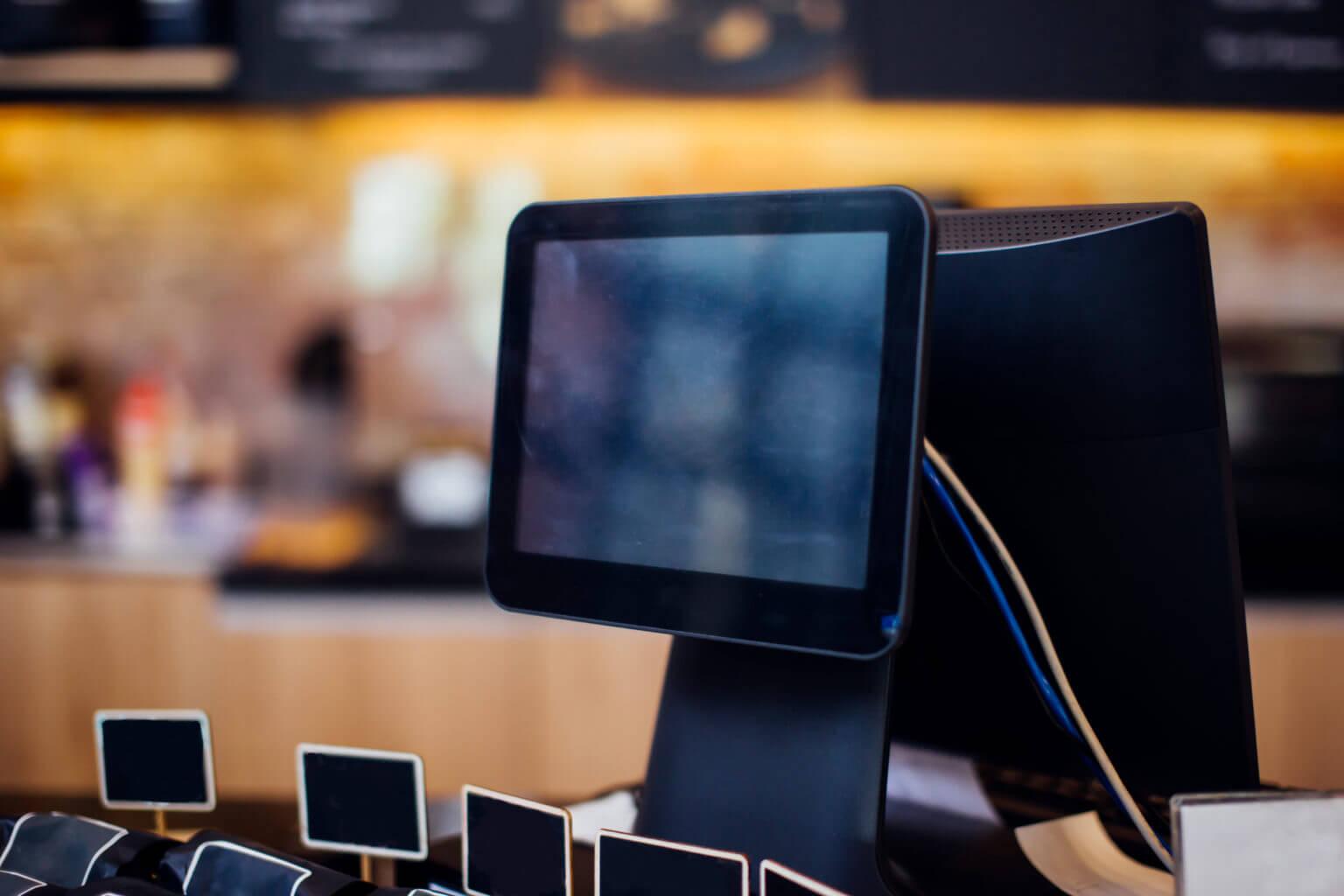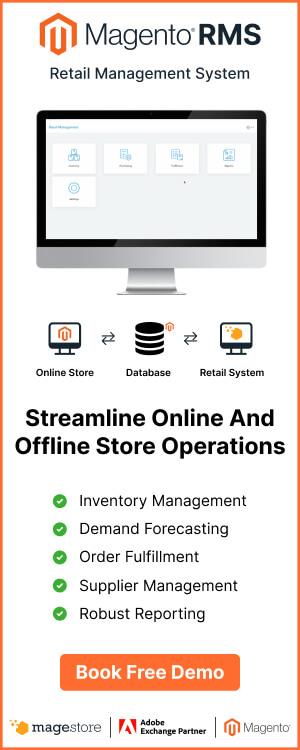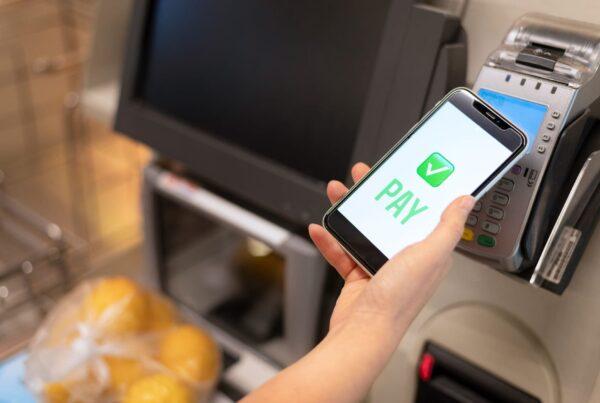When working with customers, we have encountered many cases in which they spent 2-3 hours a day on manual work to transfer data from different software to Magento, POS, and vice versa, or from POS to Magento. Noticeably, some situations have even happened for more than 10 years. Moreover, a lot of them only came to us to look for an omnichannel POS solution just a few months before their existing POS license expired. They often say something like “If only we knew”, “If we have known it before”, or “We should have paid attention to it”. Yes, it’s all about “IF”. But you can definitely do something about this.
In this article, we’d like to share with you an ultimate guide to switching POS systems for Magento. Therefore, you’re more aware of the time and what to prepare for upgrading your POS. Let’s scroll down for details.
6 signals it’s time for switching POS systems
POS technologies develop at a rapid pace to bring more and more ease, convenience, and comfort for retailers. A good-fit system makes it easier to keep track of customer and sales data, increase staff productivity and satisfaction, and boost customer service. There is really no point in having a system that can’t satisfy the needs of your business. Business stuff can get you busy the whole day. But it’s necessary to take a break and review the current workflow. If you’re using Magento and spot one of the following signals, it’s time to upgrade or switch your POS systems.
It’s difficult or impossible to manage inventory and sync data in real-time
This is the number one cause of tedious, time-consuming manual work. Let’s imagine that one of your staff has to spend 2 hours a day updating data across all systems and devices (like the case we’ve mentioned in the beginning). In total, one staff needs 14 hours/week to complete the task. If you have 5 staff, the number rises to 70 hours/week. Sometimes, there may be human errors and the staff needs more time to fix the bugs. Thus, the total hours can be higher than 70.
How about your customers? When they buy online and find their favorite items in your stores are out-of-stock. But actually, those items are still in stock but haven’t been updated yet. It means your customers get a bit disappointed and you lose these potential sales.

Difficulties in inventory management is one of the reasons for switching POS
These are just some real situations when a POS system can’t update or sync data in real-time. That makes it difficult for inventory management which can cost you plenty of customers and hours for updating data manually. In such situations, an omnichannel POS is a perfect fit, especially the one that can natively integrate with Magento. It will help you say goodbye to messy and boring manual work.
It can’t help with staff management
Staff management can be a top time-consuming task for retailers. You need to make sure you have the right number of employees working at the right place and time. One noticeable thing is that employees are the ones interacting and working mostly with POS systems. Thus, how to utilize your POS to track and manage staff performance effectively and efficiently?
In this case, you need a system that allows separating staff logins to track their performance, orders, cashflow during their working shifts. By that, you can reward staff with outstanding performance, provide timely training, or help those who may have difficulty. Moreover, by looking at the number of transactions at a particular time from POS data, you can easily arrange staff schedules, especially during peak sales hours in your stores.
It is unportable when you need mobility
Waiting in long queues for checkout can discomfort your customers and lead to unhappy shopping experiences. To solve this problem, you can take advantage of every corner in your stores and make it a checkout counter.
A PWA POS (Progressive Web App) which allows you to open the POS screen with just a link and on any browsers or a hybrid POS system can help you deal with the situation. You can easily bring your POS with you to move around the stores. By that, you can interact, assist, even process payment for customers.
More interestingly, if you want to promote your products or services in trade-shows, offline events, a POS which can work well in offline mode is such a perfect solution.
It is too expensive
You might need a suitable POS to serve your current needs. As your business grows, your POS systems also need updating to meet further business’ requirements. Therefore, you should pay attention and get familiar with the term Total cost of ownership (TCO). TCO includes the purchase price of a particular product, plus the operating costs over its lifespan. When it comes to a technology product that needs changes constantly, you can’t ignore the TCO right at the beginning of the purchase.
Every company wants to provide customers with their best products. Thus, the POS products are continuously updated, and sometimes you need to pay monthly or yearly fees for the subscription. If that expense is reasonable then there’s no need for you to bother. But if it costs you much, it signals the time to consider switching your POS.
It can’t support a customer loyalty program
Customer experience has a powerful and critical voice in retail businesses. Another top concern of any retailers is how to win customers’ hearts. One of the most suggested answers is to operate a customer loyalty program such as reward points, gift cards (physical gift cards, e-cards), or store credits.

POS systems that lack loyalty program features
You may need to know this, a study by First Data on 2018 Prepaid Consumer Insights indicated that US consumers who pay with gift cards, spend about $59 more than the value of their gift card. It means if you overlook the loyalty program, you are about to lose customers and of course sales revenues. If your existing POS systems don’t support this, you’d better think of changing to a new one.
It has no mobile option
An analysis on Mobile POS Payment from Statista indicates that transaction value in the Mobile POS Payments segment is projected to reach $372,163m in 2020. The number is expected to grow on an annual basis of 22.6% to reach a predicted total amount of $840,752 by 2024. What do these numbers mean? If your current POS system doesn’t support mobile POS payment, you’re going to lose a piece of the cake. In other words, you should think of investing in a new POS system.
Challenges when switching to a new system
Making a switch isn’t easy especially when you’ve used your current POS system for such a long time. When considering a switch, you should know some possible challenges you may or have to encounter. The better you are aware of them, the earlier you can anticipate and deal with them. We’d like to share with you some key insights based on our 10+ years of working with customers. For your convenience, we will divide this part into 3 stages including before – during – after the switch.

Acknowledge challenges before – during – after switching to a new POS
Before switching POS systems
Your existing system license may expire before you can start working on your new system. That is the first and foremost notice we’d like to remind you of. In the beginning, we shared with you that many of our customers only came to us to look for a POS solution only 1-2 months before their current system got expired. Some of the cases seemed to be easy to handle in a short period of time or just right in time. But then, it turned out that we needed more time than predicted. The common reasons for the extra time are customers require more customized features or because of the unexpected system conflict when switching. Then these customers had to use partly the working product while waiting for the complete POS to be successfully installed. Of course, it brought inconvenience to their daily retail operation.
Let us share with you one fact, the average time for a customer to have a full solution (calculated since the day they contact us until their solution goes live) is from 3-4 months. We used to deal with a lot of big cases which had a lead time up to 6 months.
So the key takeaway for you is, if you’ve thought of a switch, put it in your plan or calendar. You’d better make a real plan for switching POS systems and take it seriously. Then, arrange your time to start early. Remember to check the expired date of your current system as well. The earlier, the better.
During switching POS systems
The biggest concern in this stage is to transfer data to your new system. When you have chosen an appropriate POS provider, you should communicate your requirements and demands clearly. Thus, the system provider can give you the best-fit solution. Again, you need a practical plan beforehand.
Please keep in mind that your existing system is going to expire soon so you should pay attention to the working time of the switching project as time is money. Added that, you also need to follow the project timeline to make sure you can launch your new system before the old one expires.
Moreover, transferring data can become a nightmare if you don’t do it right. A trusted POS provider totally can handle this tough task for you. The thing here is you also need to decide what kinds of information you want to transfer so that that can save time for both – you and your new POS provider.
After the switch
It is your staff who uses the new POS the most. So you also need to put a critical task of communicating and training your staff about the new system in your plan. Normally, the POS provider will work with you closely during the whole switching process to fix any possible bugs. Remember to choose the provider who can get back to you timely and effectively.
Changes can be a bit hard at the beginning and may make you daunted. However, it is great if you know it’s time for change rather than being unaware of the need.

Staff members sell products at the physical store
90-day plan for POS purchase to help you launch the new system on time
Okay, now you understand the benefits of the POS reconciliation, we are next to how to do it properly.
The timeline to successfully buy a POS (point of sale) system is an incredibly important factor that retailers often overlook. If you want the new system to go live on time or just simply replace the existing POS before the license expires, you need to know the buying process checklist. That way you can estimate how long it’ll take for each phase and decide when it’s time to start working on your POS project.
Most retailers underestimate the complicated processes when buying or upgrading to a new POS system. With literally hundreds of options at your disposal, shopping for a POS system that meets your needs can be extremely challenging. To help you prepare for the future switch, we’ve accumulated a 90-day buyer’s guide with timelines for each phase.
You can use this guide on researching and working with POS providers, but most importantly, arrange your time to work on it as soon as possible.
Phase I: Research new POS systems
After evaluating your current POS and deciding to switch, you need to start researching POS system providers in the market. Without this phase, you can’t identify which POS system will be the best fit for your business needs. Depending on your business size and what you expect in a new POS system, the first 30 days would be the estimated time for you to fully commit to researching the right solution. This is an ideal scenario. The number of days can vary between businesses.
Day 0: Identity what to expect from your future POS system
Before researching, you need to know what you want in a POS system. Modern POS systems can help you eliminate a lot more manual work and data inaccuracies than you’d ever thought possible. Make a list of functions necessary for improving business efficiency, as well as a list of features you would prefer to have to enhance your business. When creating your feature list, consider usability, accessibility, and flexibility.

Make a list of neccessary functions for your business
There are a few must-haves for all business types. These include access to customer management functions, inventory management capabilities, employee management features, and sales reporting. It’s important, however, to remember that your unique business will have specific needs. When it comes to point of sale, there is no one-size-fits-all solution.
For example, if you’re selling electronics and want to track serial numbers for warranty products, it’s hard to find a one-size-fits-all POS having this feature since it’s not something all businesses want. So, in most cases, an easy-to-customize POS will be a safe solution if you want your business to expand in the future.
Day 10: Narrow down your options
It’s difficult to narrow down what to look for in a POS system when you have hundreds of features to choose from. Many POS systems market their products with lots of cool features and most of them can be unnecessary for your business.
Make a list of all potential providers that you want to contact for further investigation. This step of narrowing down your search is to make sure you have a more manageable number of choices.
When purchasing a POS system, choose one that not only meets your specific feature requirements but also checks all of the boxes on your business type’s essential features list.
For example, if you are a bar or quick-service restaurant, ingredient level inventory tracking and the ability to hold multiple customer tabs open at once are business-specific features you can’t afford to skip.

A point of sale system at a quick-service restaurant
Besides features, you might need to keep your eyes on pricing, policies, and services as well. Those are 3 criteria that can help you narrow down the list.
If you’re looking for a Magento POS system, you can check out all the must-have features and criteria for a Magento retailer.
Day 20: Read reviews and referrals
Once you have a list of your top providers, in the next 10 days, you’ll need to shorten the list more. You’ll need to go through POS software reviews for useful, unbiased assessments of your top choices. There’re a lot of trustworthy review sites that can help you identify the important features to look for when purchasing a POS system for your business.
Now you’ve spent 30 days in the research phase. But this is just the beginning. The next phases will be more complicated and require a lot of focus. While reading this guide, you can apply it to your business to see how much time you’ll need for this phase.
Phase II: Select a POS system
All the previous steps have focused on the process of elimination by doing a self-research. The next steps in this phase are going to help you make the right decision for your business by getting advice from the POS provider’s consultants. This is to help you know more about product features from the providers rather than just reading the information on their websites.

Ready to talk with POS providers
Day 30: Reach out to Point of Sale providers
Modern POS systems are much more complex than traditional cash registers. They have more features to be able to replace the complicated workflows of the business. That’s why it’s more time-saving to talk with a consultant to know more about the product. Most businesses are offering this consultation service for free, you can even get some useful advice from them.
For example, at Magestore, business consultants will not only show you the demo but also assess your current business status and help you design a fit solution, all for free. So, just go ahead and ask them what’s on your mind.
Here are a few questions to ask to make an informed business decision:
- Does your solution meet all of our business requirements?
You don’t want to pay for a system and then realize it lacks features you want. To avoid this, use the information gathered during the research stage to inquire about specific business features and how they can be leveraged to improve day-to-day operations in your business.
- Which pricing plans and packages are you offering?
Be aware of providers that give you uncompleted pricing information. When buying a POS system, don’t be shy to ask in detail about any potential hidden fees, processing fees, add-ons, and support services.
Here are some valuable questions to follow up with: Does the support service include in this price? If so, what level of support will I have access to? Are there any fees associated with updating the system? Ideally, you’ll want a system with free lifetime updates and flexible pricing options. This way you’re not charged with additional fees.
- Is my hardware compatible with your POS system?
In the worst case, you might end up having to transition again to another new system in the future. So, it’s better to ask the provider about the hardware compatibility. To avoid a situation where you cannot reuse or resell your equipment, just go with POS systems that can work on any desktop or tablet device. This way you can be sure that you only pay for the POS system, and can reuse the devices.
Depending on your business type and the kind of system you need, you may need to ask just a few more questions about more specific requirements.
Day 40: Try them out hands-on
As purchasing a POS system is a huge business investment, it’s important to test drive the POS system first. Most service providers will let you schedule a live demo to showcase their product features. So, it’s better to have an expert or a consultant to help you go through the demo and explain what you’re unclear on.
This allows you to get a sense of what your day-to-day experience will be like, and whether or not a particular product provider is sustainable for long-term operations.
During or after the demo, don’t forget to note down the pros and cons of each POS provider. This helps you eliminate all the unqualified systems to get closer to the final decision.
Day 50: Make your final selection
Once you’ve done your investigation and tested all POS options, you should decide on a system that meets your business’ operational and budget needs. If you already pick the right pricing plan for your business, now you’re ready to pull the trigger.
In this step, you will work with the chosen POS provider on an agreement, contract, and payment for the purchase of the new POS license.
Phase III: Set up your POS and train staff members
After completing the payment, you should start the setup and implementation process with your POS provider. Normally, setting up a POS system can be done online, but in some cases, retailers will require experts to visit their physical stores and complete the installation. So, once you have decided on a system that eliminates the need for complicated setups, here’s what you can expect:
Day 60: Prepare your hardware
The first step in implementing your POS system is to make sure that all of the hardware necessary for your setup has been prepared and is in place. Most point of sale providers will have a user guide and best practices to help you get started. Depending on how big the solution is, the process can take longer to complete. Some providers offer installation services and handle all the issues during the setup process.

Prepare your hardware
For the POS system, you might want to prepare other POS-integrated hardware devices such as cash drawers, barcode scanners, terminals, etc. It totally depends on your business requirements.
Day 70: Set up your software
If you’re using a browser-based system that requires software installation before setup, you may be able to download your package before the hardware setup. But if this isn’t the case, once your POS hardware is in place, you would want to ensure that you have access to the software that is going to transform your computer or iPad device into a sophisticated retail POS system.
Day 80: Train your staff
Basic POS systems will require less training time than complicated POS systems. Most modern POS nowadays are easy to use for store staff to get started. But it’s still important to establish a training process that’s detailed and organized enough for your staff members to fully understand the basics. Some POS providers offer cashier training materials that you can apply for your business, so make sure to ask about resources like these during the buying and setup process.

Establish a training practice
Day 90: Go live and update new features
The launch time is here! On this important day, make sure you and your staff test the new POS system multiple times to avoid problems when dealing with customers. And remember if you have any questions moving forward, your POS provider should offer support service 24/7 at least 2 weeks before the launch. After you see no critical issues, you’re ready to serve real customers.
That is an ideal 90-day plan for normal small and medium businesses. The time can be longer or shorter but the process will stay the same. You can apply this process to your business, set the launch time, and estimate how long it will take to the due date. That’s when you will know when to start working on researching a new POS system.
In a nutshell
Buying the right point of sale system is a crucial aspect of setting up a successful retail operation. If you intend to switch to a new one, don’t start when the launch time is too close or the expired license is coming too soon. A huge system cannot be done in weeks or even months. So, let’s be well prepared.
If you want to switch to a new system, we hope you know what to do and when to transition after reading this guide. Let us know when you will look for a new POS system so that we can design a product roadmap for your business.















Nice and very informative information. its really helpful for beginners. Thanks for share this